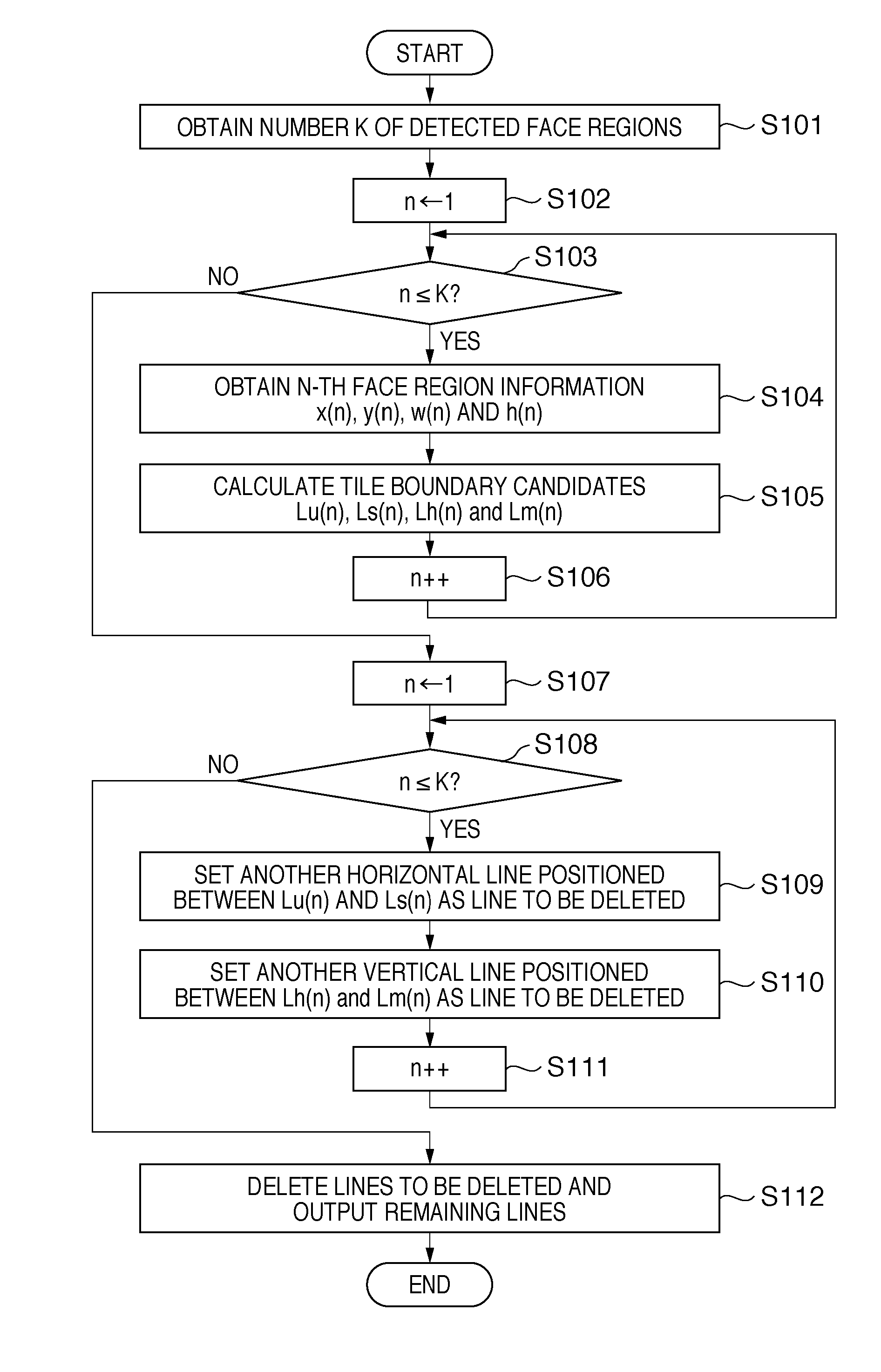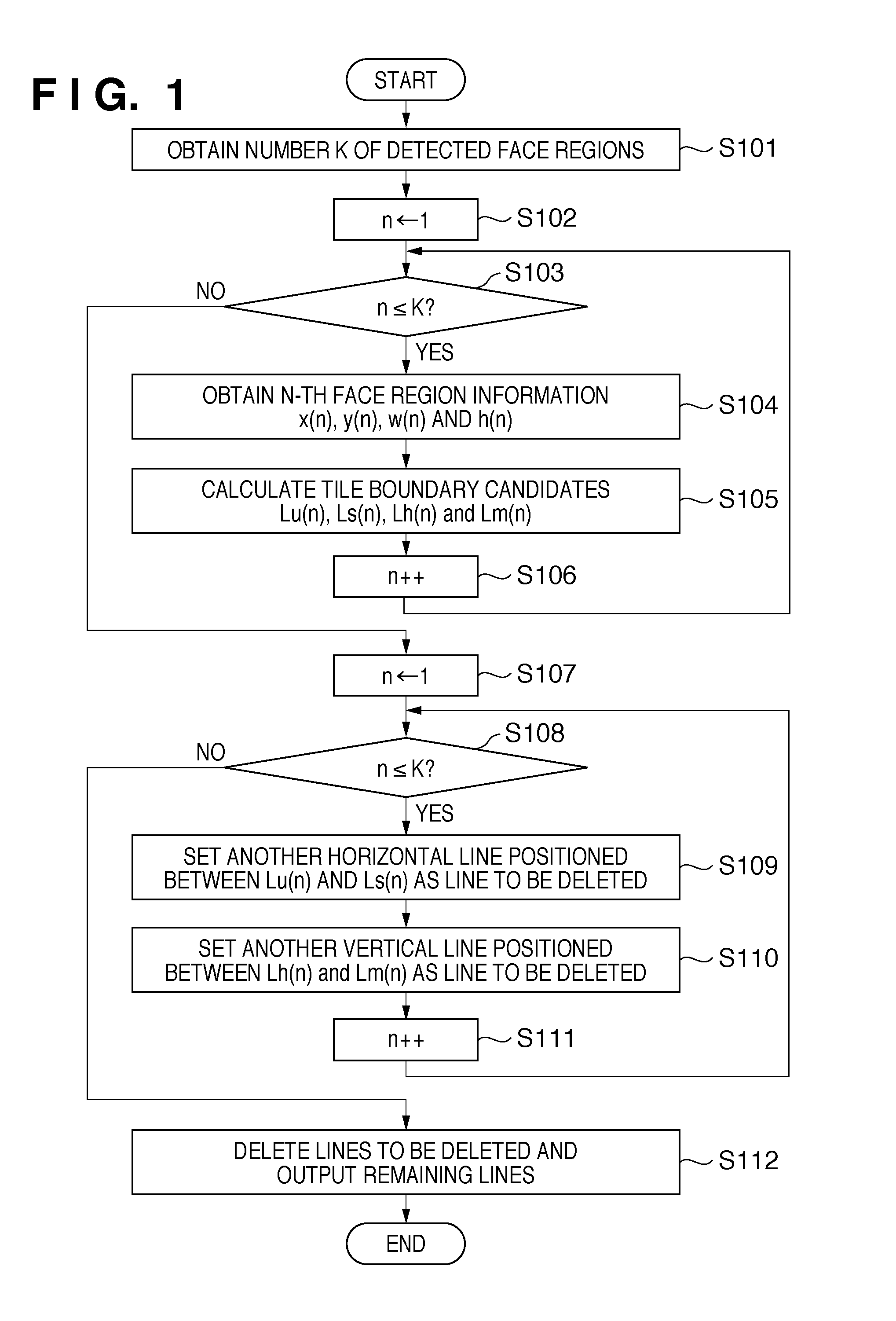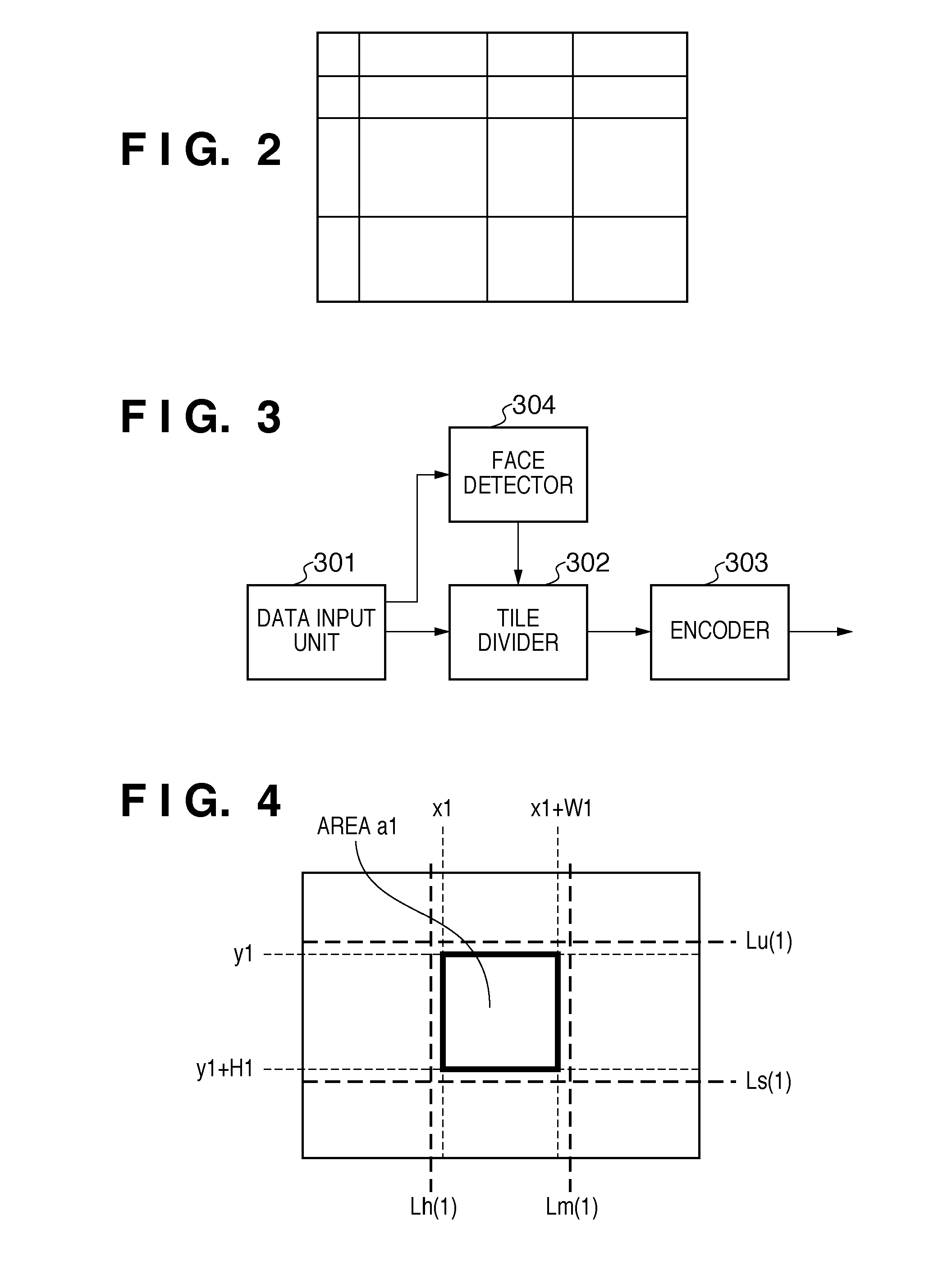Image encoding apparatus and control method thereof
a technology of image data and encoding apparatus, applied in electrical apparatus, instruments, computing, etc., can solve the problems of inability to perform encoding, inconvenient decoding only a specific region, and image quality degradation around tile boundaries, so as to prevent the degradation of image quality in the specific region, suppress segmentation, and suppress the effect of segmentation
- Summary
- Abstract
- Description
- Claims
- Application Information
AI Technical Summary
Benefits of technology
Problems solved by technology
Method used
Image
Examples
first embodiment
[0038]In the first embodiment, a tile boundary is set based on positional relation among face detection results, and thereby two or more face regions are respectively set within a smallest possible sized tile. Further, for the sake of simplification of explanation, the description of the embodiment will be made on the presupposition that an image encoding apparatus in the present embodiment is incorporated in an image capturing apparatus such as a digital camera.
[0039]FIG. 3 is a block diagram of the image encoding apparatus according to the first embodiment.
[0040]As shown in FIG. 3, the image encoding apparatus according to the present embodiment has a data input unit 301, a tile divider 302, an encoder 303 and a face detector 304.
[0041]The data input unit 301 inputs image data obtained by an image sensing device of the digital camera. The face detector 304 detects a face region (specific region) of a person in the input image data, and outputs information regarding the detected re...
second embodiment
[0084]In the first embodiment, a smallest possible size is set for a tile including a face region with its tile boundaries not crossing any other face region. In the second embodiment, crossing of some tile boundaries in face regions is permitted.
[0085]As an example where the crossing of tile boundaries in some face regions is permitted, given is a case where a large number of faces are detected and the size of a tile set by the method in the first embodiment is very large.
[0086]For example, in a group photograph shown in FIG. 9, many face regions exist, and some of the face regions overlap each other. Otherwise, in a non-overlapped face region, a tile boundary candidate line crosses another face region and the tile boundary is an end of the image, thereby the image cannot be subjected to tile division.
[0087]In this case, to efficiently perform tile division and encoding, it is necessary to automatically prioritize the detected face regions in the obtained photograph and determine a...
third embodiment
[0105]Next, in the third embodiment, an encoding method will be described regarding a case where tile boundaries are set and the tile has large blank space in the first and second embodiments.
[0106]For example, when tile boundaries are set as shown in an image 602 in FIG. 6A, the area a1 is in an upper position in the tile and the area a2 is in a lower position in the tile. Accordingly, even only the tiles including face regions are extracted and subjected to decoding processing, unnecessary portions are also processed.
[0107]In this case, as regions to be processed other than the face regions as objects of processing are increased, the processing speed is lowered.
[0108]When a face region exists on the lower side in a tile, upon encoding, the coordinate value of the detected face region is added as a pointer to coded data, thereby the processing can be started from the head of the face region without processing blank space.
[0109]Further, when the face region exists on the upper side ...
PUM
 Login to View More
Login to View More Abstract
Description
Claims
Application Information
 Login to View More
Login to View More - R&D
- Intellectual Property
- Life Sciences
- Materials
- Tech Scout
- Unparalleled Data Quality
- Higher Quality Content
- 60% Fewer Hallucinations
Browse by: Latest US Patents, China's latest patents, Technical Efficacy Thesaurus, Application Domain, Technology Topic, Popular Technical Reports.
© 2025 PatSnap. All rights reserved.Legal|Privacy policy|Modern Slavery Act Transparency Statement|Sitemap|About US| Contact US: help@patsnap.com



